At Vinyasa Earth, a sustainable homestay in Jaipur’s Maheshwas Khurd village, everyone plays an integral role. Take Coco, for instance. The Akita Inu canine fills the most important spot of ‘Chief Emotions Officer’.
Coco has a packed schedule. When he isn’t ensuring that the artists — who are at Vinyasa for one of the many residency programmes — are having a good time, he revels in back rubs from the dance veterans under whose aegis the performers learn.
Once you get past Coco’s overwhelm of warmth, there is Laali bhabhi’s pampering that follows. She won’t take ‘no’ for an answer as she doles out helpings of her dal baati churma (a Rajasthani delicacy made with lentils and wheat bread), curries that feature seasonal vegetables, and spinach rotis (Indian flatbread). While the protagonist of the meal varies with the seasons, there is a usual fix of salad, papadam (a flat-fried snack), and curd accompanying every lunch and dinner.
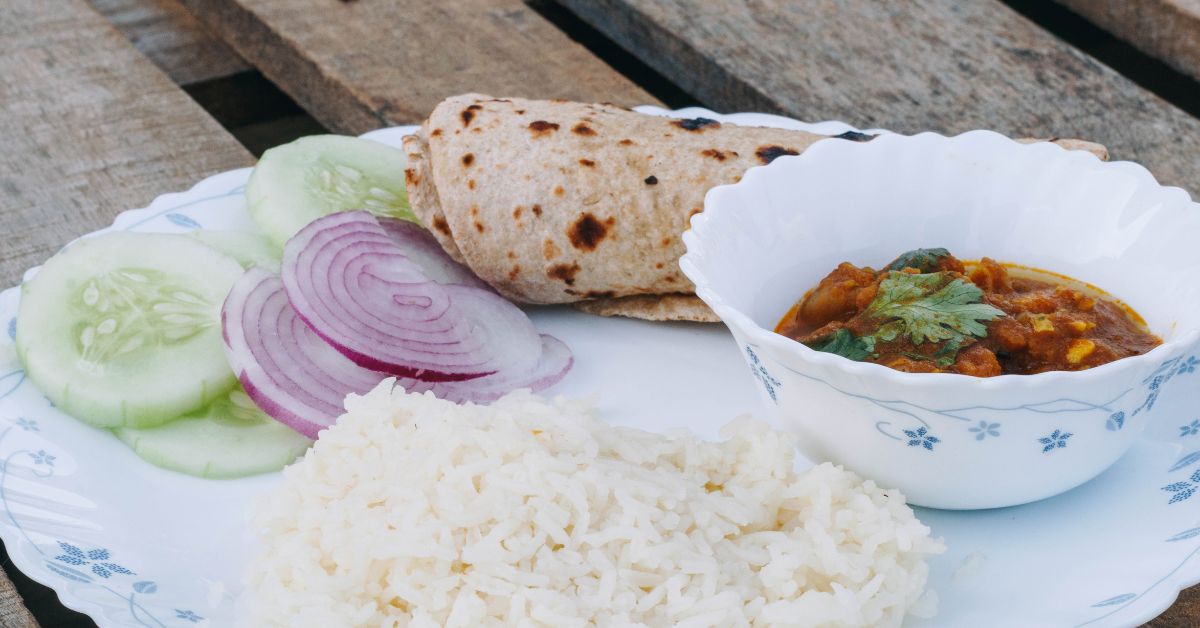
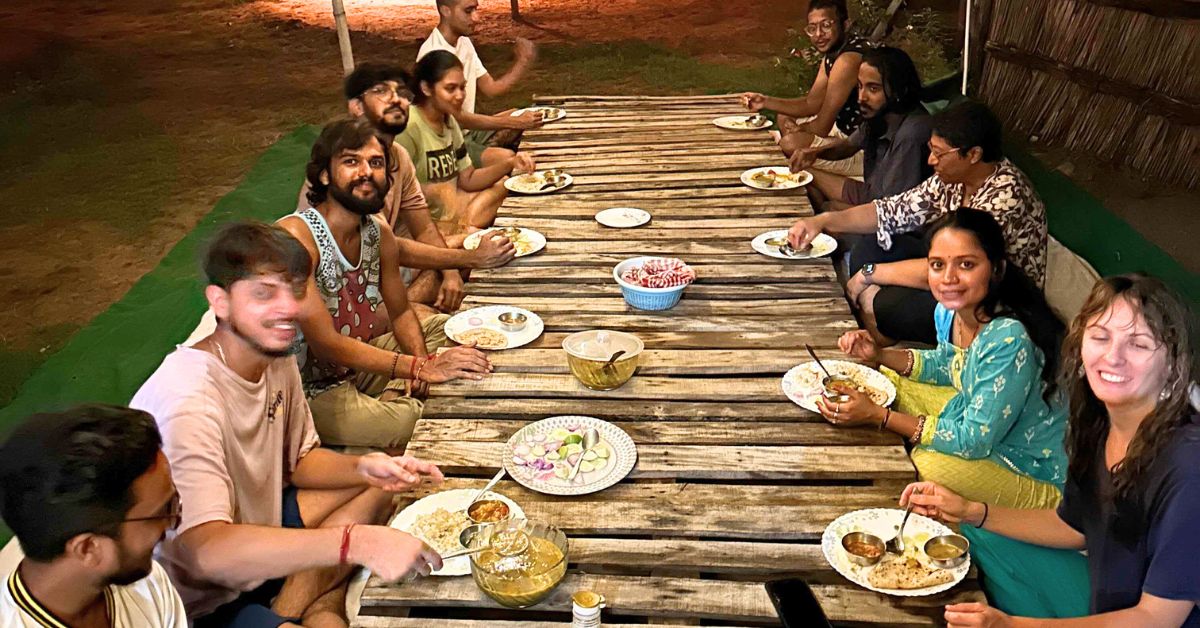
Compliment Laali bhabhi on her culinary prowess and ask her the secret. She will point you in the direction of the wood-fire stove, which she credits for lending the real magic to the food.
Every dish is meticulously prepared; one might suggest it almost resembles art. But as founder and host Sankalp Sharma (30), a professional dancer and artist, shrugs when I relay this to him, “Everything at Vinyasa Earth is art.”
The dots connect
Today, six cottages dot the landscape, marking the territory in Maheshwas Khurd village where Sankalp’s dreams took shape two years ago. “There is zero cement used in the building of this property,” he shares proudly. Instead, bamboo, mud, and lime stepped in.
Conceptualising a homestay built out of sustainable materials in a Jaipur village wasn’t part of Sankalp’s plan. “As a kid, I was never into village life,” he is honest. “I had certain notions about villages not being the most hygienic spaces.”
Have the last few years disproved those fallacies? “Absolutely,” he notes.
Sankalp has been a dancer for 15 years now. The lines blur between his moves between Mumbai, Bengaluru, Delhi, and New York. Time zones changed but the one thing that remained constant was a haunting realisation — a metropolitan could never satisfy the kind of freedom an artist craved. Despite this, Sankalp wasn’t able to put a finger on a tangible solution.
But the answer lay in a plot of land — where Vinyasa Earth now stands — that his father Vijay Kumar Sharma had purchased 11 years ago. A businessman by profession, Sharma decided to move to greener pastures (pun intended) in 2014 and purchased a 1.25-acre piece of land. His hard work is reflected in the 100 trees — a mix of fruit varieties interspersed with regional plants, vegetable plants and grains — that stand on the land.

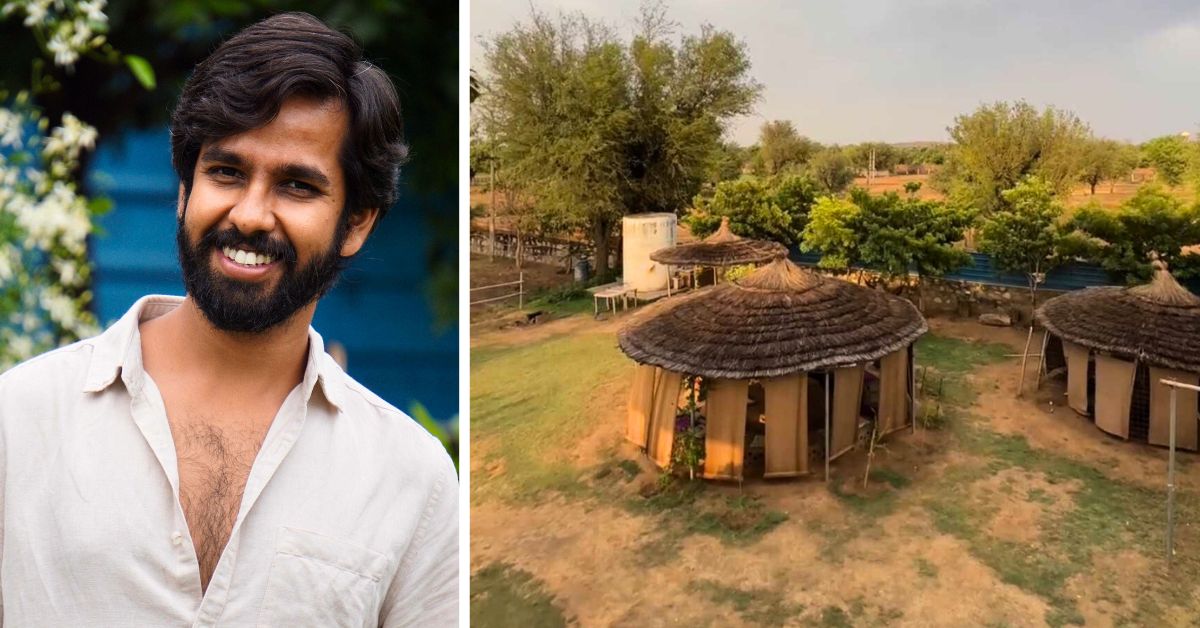
And so, Sankalp’s quest to start dreaming beyond his home turf led him to Jaipur. The land would prove ideal for his dream stay, which he envisioned would be a spot for artist residencies, workshops, and retreats.
With no formal education in architecture, Sankalp relied on the two things he trusted the most — the locals and his intuition — to get a blueprint in place.
Everything was drawn just on paper
The choice of material — bamboo, lime, mud, cow dung, and hay— was an offshoot of his quest for sustainability. “Every day was an experiment,” he maintains. Out of the host of materials he used, bamboo proved to test his patience the most. “I intended to design the studio space ‘Shala’ completely using bamboo. But it being a non-native material I didn’t know how it was going to react to the environment and the weather. Eventually, we made the ceiling out of bamboo, and the foundation using stone and lime,” he adds.
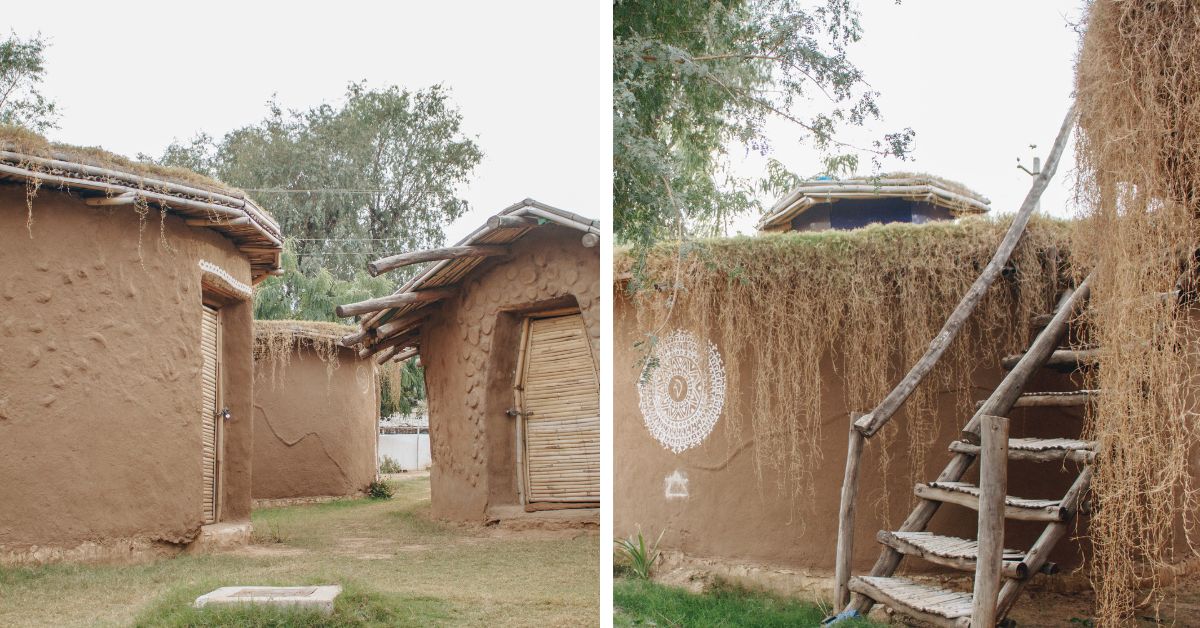
The material that was a crowd favourite of Sankalp, Laali bhabhi (Yes! She was also a part of the construction team), and the locals was cob. Made out of clay, cow dung, and hay, Sankalp says it offered a bounty of benefits to the construction. “Using it [cob] in the walls created insulation for the winters. The moment you enter the cottage, you feel warm. At the same time, in summer, the cottages feel six to seven degrees cooler.”
The beautiful oasis that is Vinyasa Earth is not just a blend of various eco materials but also of many minds and hands. Its dancer-founder insists that it is an ongoing experiment. “I beautify the space according to how I feel every day. When I started building, artists had already started coming in. They would share their ideas, and their visions, and these aligned with what I had in mind. In many ways, the artists have contributed to the space.”
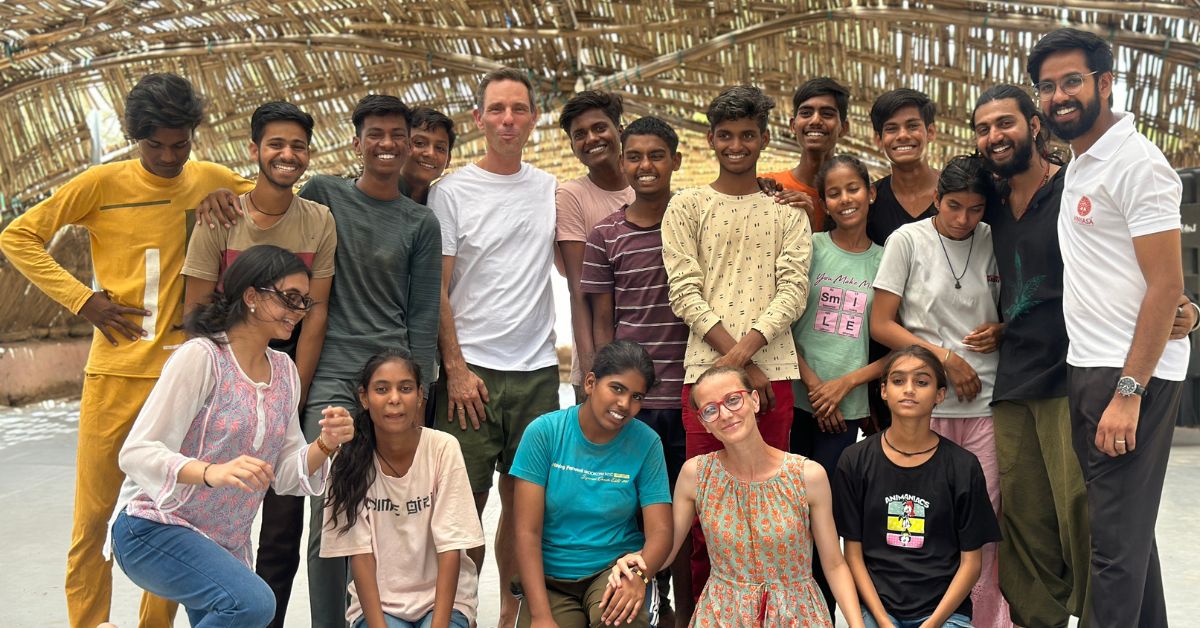
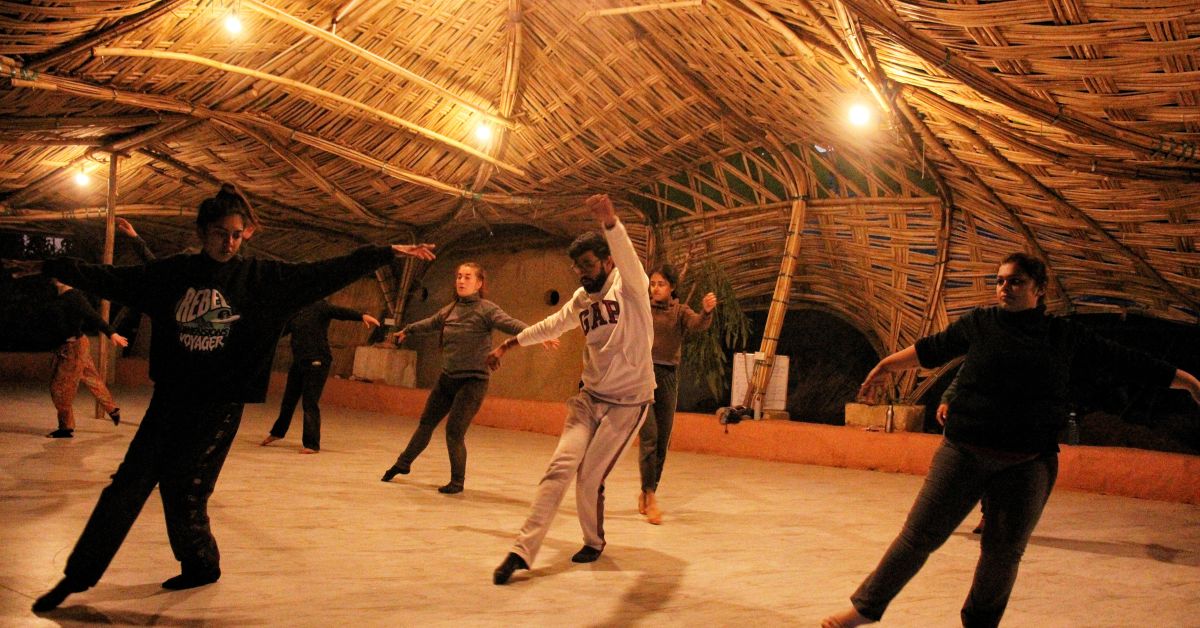
Take Dev, for instance, a dancer hailing from South India. Speaking about his journey at Vinyasa, he says, “I have lived every part of this experience. Growing up I watched my nani (grandmother) plaster her house using mud and natural materials. Building Vinyasa brought back a lot of memories for me.”
After almost a year of building, the property started life as a homestay in 2022. And since then, one emotion has trumped every other. “The energy inside this space is so vibrant that each time one enters, they feel empowered to dance, be creative or simply be themselves,” Sankalp shares.
Where art takes precedence
When in Mumbai, Sankalp’s pet peeve was the bed in his 2 BHK apartment that he shared with eight others. “I had so many dreams, and plans. But there was never space for anything.” His 2.5 ft mattress led him to wake up with back aches every other day.
So, when he started Vinyasa Earth, he designed it to tackle the pain points that artists often experience. “I was insistent that the stay should be both, comfortable and artistic. I thought from the perspective of dancers,” he says. “The mattresses at Vinyasa Earth come recommended by physiotherapists. They measure four feet in width so one can sleep well. The whole space is designed with a certain kind of flow. There is a story in every wall at Vinyasa.”
One of the draws at the stay is the amphitheatre. “We host numerous residencies for dancers, theatre artists, and filmmakers here. Teachers from across the world come for these,” says Sankalp sharing that this year they are keen on hosting a retreat for elderly people which is curated keeping their needs in mind.
When you aren’t watching (or taking part) in these residencies, there is much to keep you occupied — yoga, forest baths, village walks, meditation, trekking, pottery, sharing circles, Rajasthani folk performances, open mics, star gazing, jam sessions, art exhibitions, and sustainable building workshops.
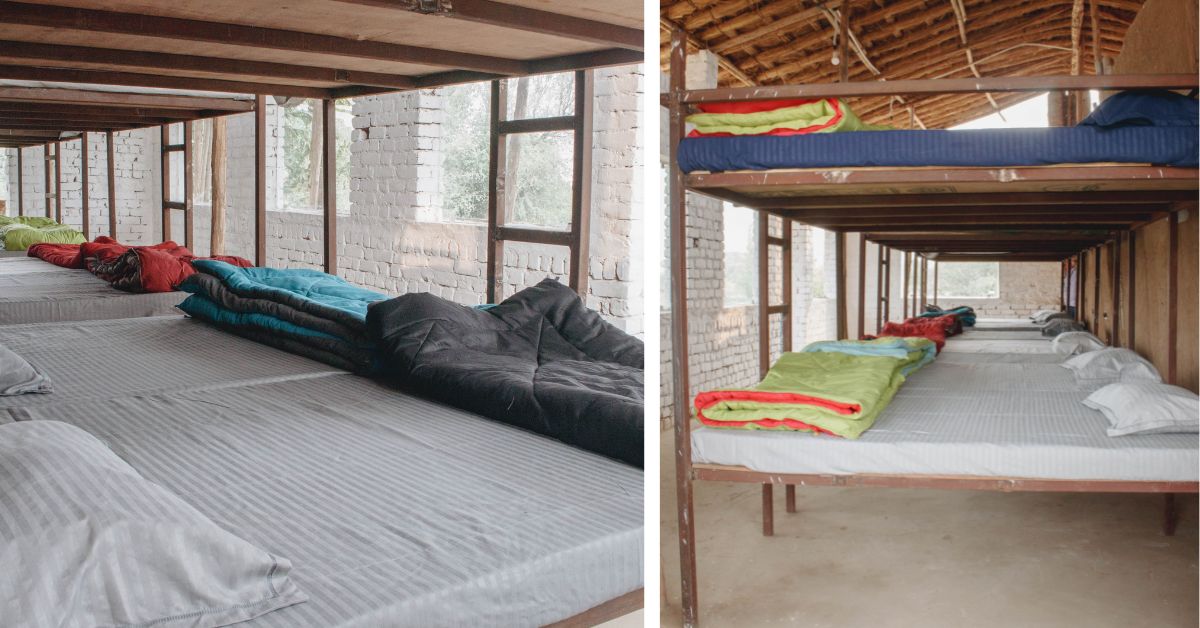
Take a walk someday; skirt around the amphitheatre, and you’ll see the six cottages. “Every cottage comes with a private bathroom, a double bed, and plenty of space,” Sankalp elaborates on how each cottage is themed according to an element of the Universe. Art and creativity seep out of every pore.
Cottage ‘Jal’ replicates the feeling of being in a cocoon, or a womb if you will. “There is plenty of natural light, which creates an ‘openness’. It is also the only cottage on the property with an aesthetic roof that resembles a wave.” Sankalp adds that the wall being made out of cob sets the vibe of an ocean floor while adding to the cooling effect.
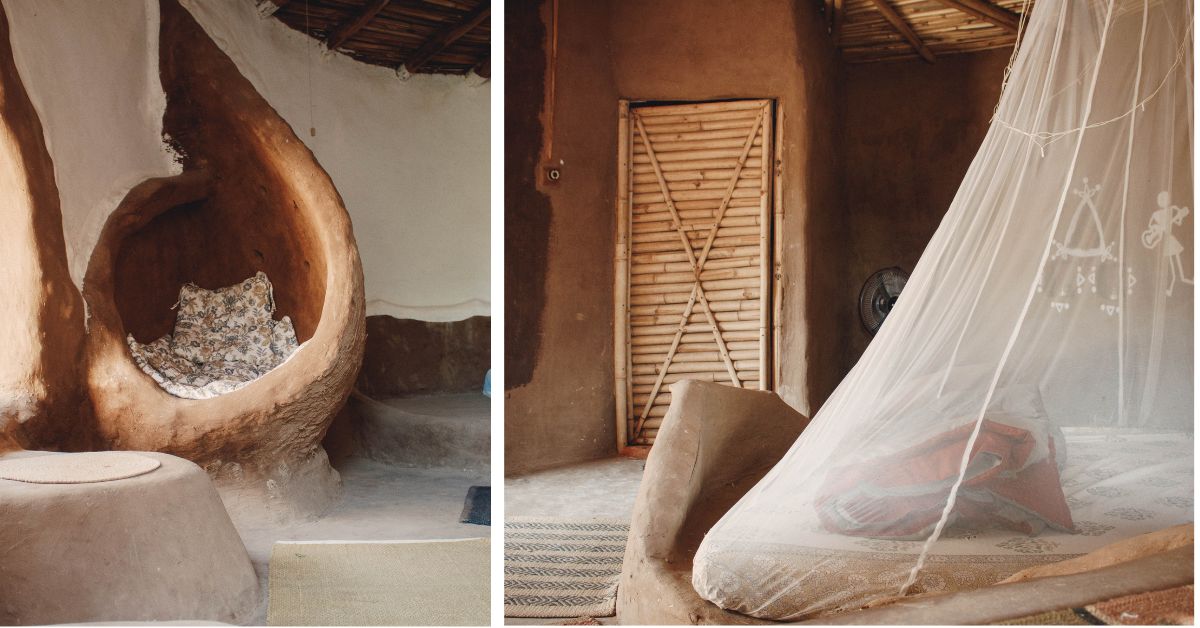
‘Agni’ room’s stunning feature is the pink-tinted walls and the luxurious bathing tub.
The ‘coolest’ cottage of all is ‘Prithvi’, which features a wall made out of cob and stone, while cottage ‘Vayu’ will make you feel in seventh heaven (literally!) as it is above the ground. Cottage ‘Chandrama’ features a reciprocal roof with a garden on top, and a circular skylight. “It feels like the moon is sitting in your cottage,” Sankalp banters.
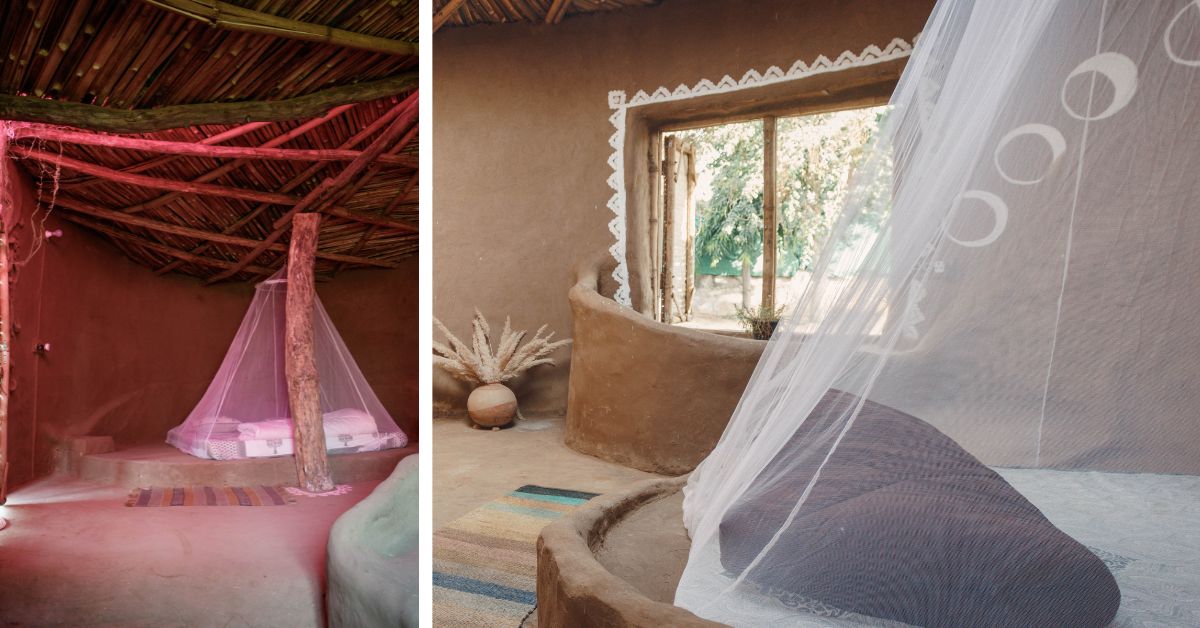
Cottage ‘Shunya’ is designed around the concept of ‘nothingness’ and is the only cottage that has a window opening out to the open-air theatre. There is also a dormitory option for those who would like to mix with other artists.

The goal, however, says Sankalp was to not just create a space that would be artistic but one that prides itself on sustainability. “We have a natural pond that harvests around 30,000 litres of rainwater. The same is channelled for irrigation purposes and vegetation. We encourage guests to harvest their own food and send it to the kitchen where Laali bhabhi uses it in the meals.”
Whether it is the creative, fine-tuned movements of the artists or the way Laali bhabhi makes a roti or even the way Coco seems to mingle with the guests — Sankalp was right when he said — everything has a touch of art to it.
Book your creative escape here.
Edited by Pranita Bhat; Pictures source: Sankalp Sharma
No comments:
Post a Comment